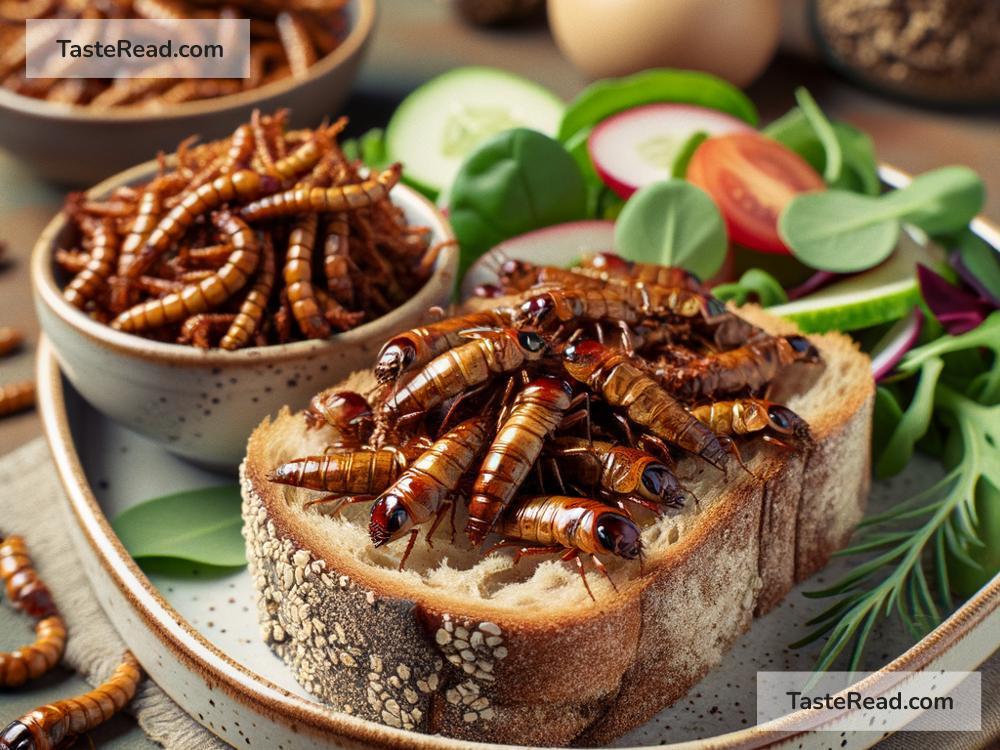The Buzz Around Insect-Based Protein: A Sustainable Food Option
When you hear the word “protein,” you might think of meat, eggs, or beans. But have you ever thought about insects as a source of protein? For many people, the idea of eating insects can seem strange or even unpleasant. However, insect-based protein is gaining popularity as a sustainable and healthy food choice. In this blog, we’ll explain what insect-based protein is, why it’s beneficial, and how it might become part of our diets in the future.
What Is Insect-Based Protein?
In simple terms, insect-based protein is protein that comes from insects. Just like chicken, beef, or fish, certain types of insects can be eaten and provide essential nutrients our bodies need. Popular edible insects include crickets, mealworms, grasshoppers, and black soldier fly larvae. These bugs can be ground into powders, roasted, or used to make snacks, flour, and even protein bars.
Eating insects is not new. In many cultures around the world, insects have been enjoyed as part of traditional diets for centuries. For example, countries in Africa, Asia, and Latin America regularly consume insects as tasty, nutritious treats. Now, companies in Europe and North America are exploring ways to make insect-based protein products more accessible to people who may not be used to eating bugs.
Why Are Insects a Good Source of Protein?
One big reason insects are gaining attention as a food source is their high protein content. Protein is important because it helps build and repair muscles, keeps us full, and supports overall health. Insects like crickets contain all the essential amino acids your body needs, making them a “complete protein” just like meat or eggs.
But it’s not just the protein that’s impressive. Insects also contain important vitamins and minerals, such as iron, calcium, and B vitamins. For example, mealworms are rich in healthy fats and nutrients, making them a great alternative to traditional protein sources.
Are Insects the Future of Food?
The idea of eating insects may sound unusual to some, but there are many reasons why insects could be the food of the future. Let’s look at some key benefits:
1. Good for the Environment
Producing meat like beef and pork takes a lot of resources. Farmers need land, water, and grain to raise animals, and these processes release greenhouse gases into the air, which contribute to climate change. In contrast, insects require far fewer resources to grow. They produce less waste, need less space, and emit fewer greenhouse gases.
For example, crickets need 12 times less food than cattle to produce the same amount of protein. They also require much less water. With concerns about climate change and growing global food demands, insect farming offers a more eco-friendly way to produce protein.
2. Efficient Food Production
Insects grow quickly and reproduce in large numbers, making them an efficient food source. Since insects can eat agricultural byproducts (like leftover fruit and vegetable scraps), farming them can reduce food waste, too. This makes insect farming both practical and sustainable.
3. A Solution to Food Shortages
The world’s population is expected to grow to nearly 10 billion by 2050. To feed everyone, experts predict we’ll need to rethink how we produce food. Insects could play a key role in solving global food shortages because they can be farmed cheaply, in small spaces, and with few resources.
What’s It Like to Eat Insects?
If the thought of eating bugs makes you nervous, don’t worry—many insect-based protein products don’t look or taste like insects. For example, cricket powder can be mixed into smoothies, used in baking, or added to energy bars. It has a mild nutty flavor that blends well with other ingredients.
You can also find snacks like roasted mealworms, which are crunchy and seasoned with spices, or chips made with cricket flour. These products are made to feel familiar and appealing, so you don’t have to eat a whole grasshopper if you’re not ready!
For those who do want a more adventurous eating experience, whole roasted insects are often served in restaurants or markets in countries where eating insects is common. People say grasshoppers are crunchy and taste like popcorn!
Overcoming the “Yuck” Factor
Despite the benefits, one of the biggest challenges for insect-based protein is cultural attitudes. Many people are not used to eating bugs, and the idea might seem strange or gross. But remember, foods like sushi or lobsters were once considered odd in certain regions, too. Today, they’re gourmet favorites! As people learn more about the benefits of insect protein and experience its taste, attitudes may shift.
Education and creative products are helping to break the stigma. For example, companies are making insect-based snack bars, pasta, and burgers that look and taste familiar. Schools and restaurants are starting to include insects in cooking demonstrations to normalize them as a food option.
Conclusion
Insect-based protein is a sustainable, nutritious, and efficient way to meet the world’s growing food needs. Though the idea may feel unfamiliar, insects are already a staple in many diets around the globe. As more people discover how versatile and eco-friendly insects can be, we may start seeing them on grocery store shelves and dinner plates more often.
Next time you hear about cricket flour or roasted mealworms, consider giving them a try! Who knows—you might find yourself enjoying a delicious snack that’s good for both your health and the planet. Insects could be the key to feeding a hungry world while protecting our environment—a solution that truly has us buzzing with excitement!


